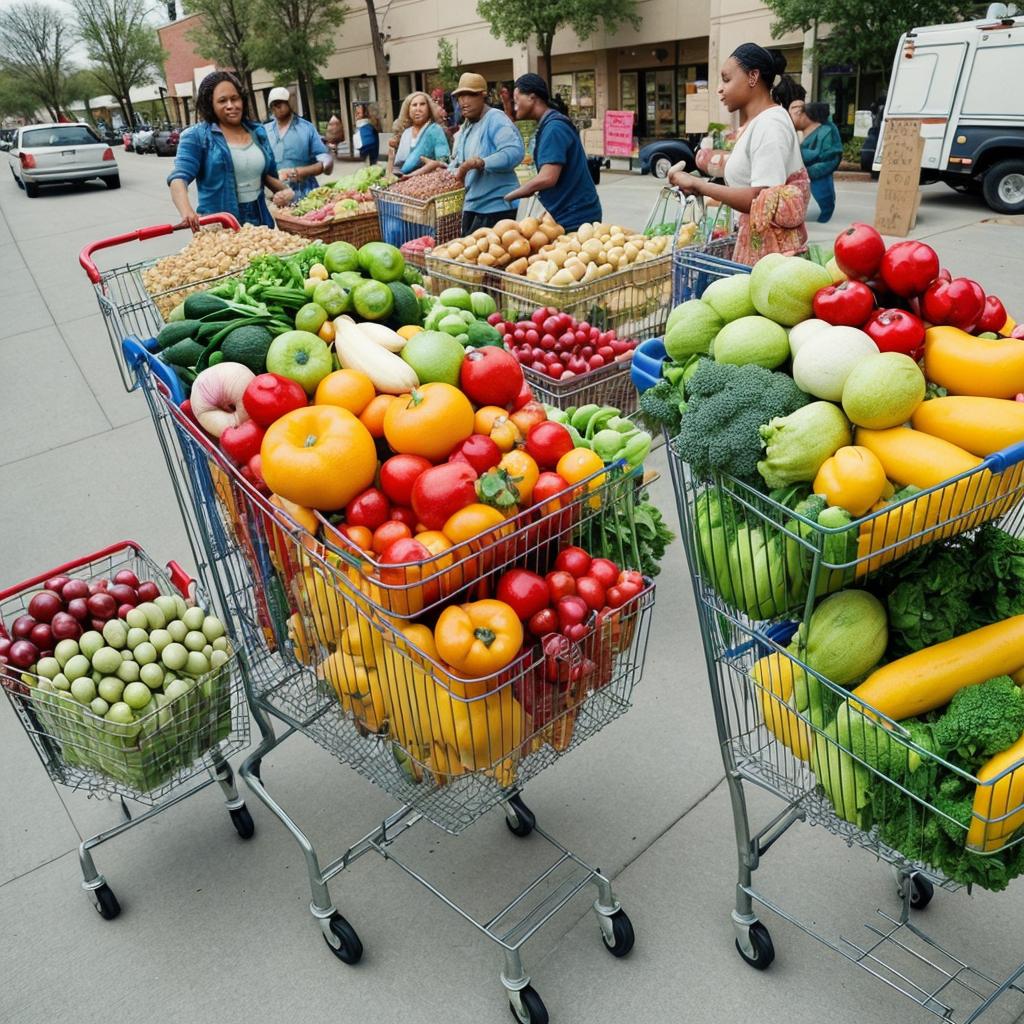Food Stamps Vs Cash Assistance: a Balanced Analysis

Are you curious about the effectiveness of food stamps versus cash assistance?
In this balanced analysis, we delve into the accessibility, impact on poverty alleviation, nutritional health, cost-effectiveness, and potential for long-term economic empowerment.
By examining these factors, you’ll gain a comprehensive understanding of the benefits and drawbacks of each option.
So, let’s explore the intricate nuances of this important debate and empower ourselves with knowledge.
Key Takeaways
- Food stamps and cash assistance programs both play a crucial role in alleviating poverty by providing access to nutritious food and direct financial support for basic needs.
- Food stamps (SNAP) have the potential to promote nutritional health by incentivizing the purchase of healthy foods, while cash assistance lacks restrictions on fund usage, which may affect nutritional choices.
- Balancing budgetary considerations with potential long-term benefits is important when considering the cost-effectiveness of both food stamps and cash assistance programs.
- Cash assistance programs have the potential to promote long-term economic empowerment by offering services such as job training, education, and support for finding employment, allowing individuals to allocate resources based on their needs and goals.
Accessibility and Eligibility Criteria
To determine your eligibility for either food stamps or cash assistance, you must meet specific accessibility criteria. These criteria are put in place to ensure that assistance is provided to those who truly need it.
For food stamps, eligibility is determined based on your income and household size. The program takes into account your gross income, deductions, and allowable expenses to calculate your net income. If your net income falls below a certain threshold, you may qualify for food stamps.
Cash assistance, on the other hand, has additional eligibility criteria. In addition to income requirements, you must also meet certain work-related criteria such as participating in a work program or actively seeking employment. The goal of cash assistance is to provide temporary financial assistance to individuals or families in need while they work towards self-sufficiency.
It’s important to note that eligibility criteria may vary by state, so it’s advisable to check with your local government agency for specific requirements.
Impact on Poverty Alleviation
By providing financial assistance and support to individuals and families in need, both food stamps and cash assistance programs have a significant impact on alleviating poverty. These programs aim to address the basic needs of vulnerable populations and help them improve their financial situation.
Food stamps, also known as the Supplemental Nutrition Assistance Program (SNAP), ensure that low-income individuals and families have access to nutritious food. This not only reduces hunger and malnutrition but also frees up other financial resources that can be used for other essential expenses, such as housing and healthcare.
Cash assistance programs, on the other hand, provide direct financial support to individuals and families to meet their basic needs, including rent, utilities, and other essential expenses. This enables them to cover their immediate needs and stabilize their financial situation, reducing the risk of falling further into poverty.
By alleviating the financial burden, these programs provide individuals and families with the opportunity to focus on improving their education, skills, and employability, thereby increasing their chances of escaping poverty in the long term.
While both food stamps and cash assistance programs have their merits, it’s important to evaluate their effectiveness in reducing poverty and promoting self-sufficiency. Further research and analysis are necessary to determine the long-term impact of these programs and identify areas for improvement to ensure a more comprehensive poverty alleviation approach.
Effectiveness in Promoting Nutritional Health
Promoting nutritional health effectively involves ensuring access to nutritious food for individuals and families in need. When comparing food stamps and cash assistance, it’s important to consider their effectiveness in achieving this goal.
Food stamps, also known as the Supplemental Nutrition Assistance Program (SNAP), provide recipients with an electronic benefit card that can be used to purchase eligible food items. This program is specifically designed to promote nutritional health by incentivizing the purchase of healthy foods.
On the other hand, cash assistance doesn’t come with any restrictions on how the funds can be used, which may result in individuals and families making choices that don’t prioritize their nutritional health.
Studies have shown that food stamps have a positive impact on dietary quality, leading to increased consumption of fruits, vegetables, and whole grains. However, it’s worth noting that the effectiveness of food stamps in promoting nutritional health can vary depending on factors such as education, income, and access to grocery stores with a variety of healthy options.
Cost-Effectiveness and Budgetary Considerations
When considering the cost-effectiveness and budgetary considerations of food stamps versus cash assistance, you need to evaluate the impact on government spending and the potential long-term benefits for individuals and families.
Both food stamps and cash assistance programs have associated costs for the government, but their effectiveness in addressing poverty and improving overall well-being should also be taken into account.
Food stamps, also known as the Supplemental Nutrition Assistance Program (SNAP), provide individuals and families with funds specifically designated for purchasing food. This targeted approach ensures that the assistance is used for its intended purpose.
Cash assistance, on the other hand, provides individuals with more flexibility in how they use the funds, which may or may not be directed towards basic needs such as food.
From a budgetary perspective, food stamps may be more cost-effective for the government since they’re restricted to food purchases and have less potential for misuse. Cash assistance programs, on the other hand, may require additional oversight and monitoring to ensure the funds are being used appropriately.
However, it’s important to consider the potential long-term benefits for individuals and families. Cash assistance programs can provide individuals with the flexibility to address their unique needs, such as paying for rent, utilities, or medical expenses. This can have a positive impact on their overall well-being and potentially reduce their reliance on government assistance in the future.
Potential for Long-Term Economic Empowerment
Consider the potential for long-term economic empowerment through cash assistance programs.
Cash assistance programs, such as Temporary Assistance for Needy Families (TANF), aim to provide individuals and families with the financial support they need to meet their basic needs and work towards self-sufficiency. These programs offer a range of services, including job training, education, and support for finding employment. By providing direct cash assistance, individuals have the flexibility to use the funds in a way that best suits their unique circumstances, whether it be paying for rent, utilities, or investing in education or job training.
One of the key advantages of cash assistance programs is that they enable individuals to make decisions about how to allocate their resources based on their own needs and goals. This can empower individuals to make choices that can have a lasting impact on their economic well-being. For example, cash assistance can be used to invest in education or vocational training, which can lead to higher-paying job opportunities in the long run. Additionally, having access to cash can also help individuals build savings, which can serve as a safety net during times of financial instability.
However, it’s important to note that cash assistance programs alone may not guarantee long-term economic empowerment. These programs should be complemented with comprehensive support services, such as access to affordable healthcare, childcare, and transportation. Furthermore, efforts should be made to address systemic barriers that can hinder economic mobility, such as discrimination and lack of access to quality education and employment opportunities.
Frequently Asked Questions
How Can I Apply for Food Stamps or Cash Assistance?
You can apply for food stamps or cash assistance by visiting your local social services office or applying online. It’s important to gather all necessary documents and provide accurate information to ensure a smooth application process.
Are Food Stamps and Cash Assistance Available to Everyone, Regardless of Their Income Level?
Food stamps and cash assistance are available to individuals regardless of income level. They provide support for basic needs, but eligibility requirements vary. It’s important to consider your specific circumstances and consult official resources for accurate information.
Does Receiving Food Stamps or Cash Assistance Automatically Mean That a Person Will Be Lifted Out of Poverty?
Receiving food stamps or cash assistance doesn’t automatically lift you out of poverty. Both programs provide temporary support, but long-term success requires additional steps like employment, education, and financial management.
Can Food Stamps or Cash Assistance Be Used to Buy Unhealthy or Non-Nutritious Food Items?
Yes, food stamps or cash assistance can be used to buy unhealthy or non-nutritious food items. However, it is important to note that individuals have the choice to make healthier food choices.
Does the Implementation of Food Stamps or Cash Assistance Programs Lead to an Increase in Government Spending and Taxes?
Does implementing food stamps or cash assistance programs lead to a rise in government spending and taxes? It’s crucial to analyze the potential impact on these factors before making any conclusions.



